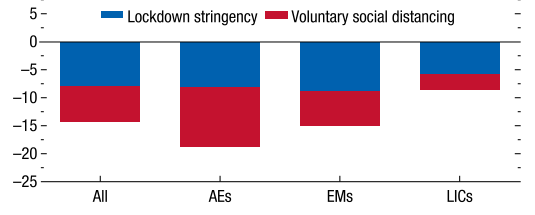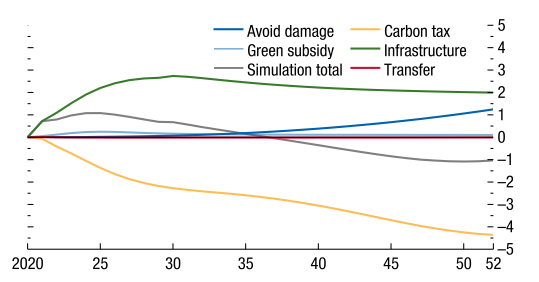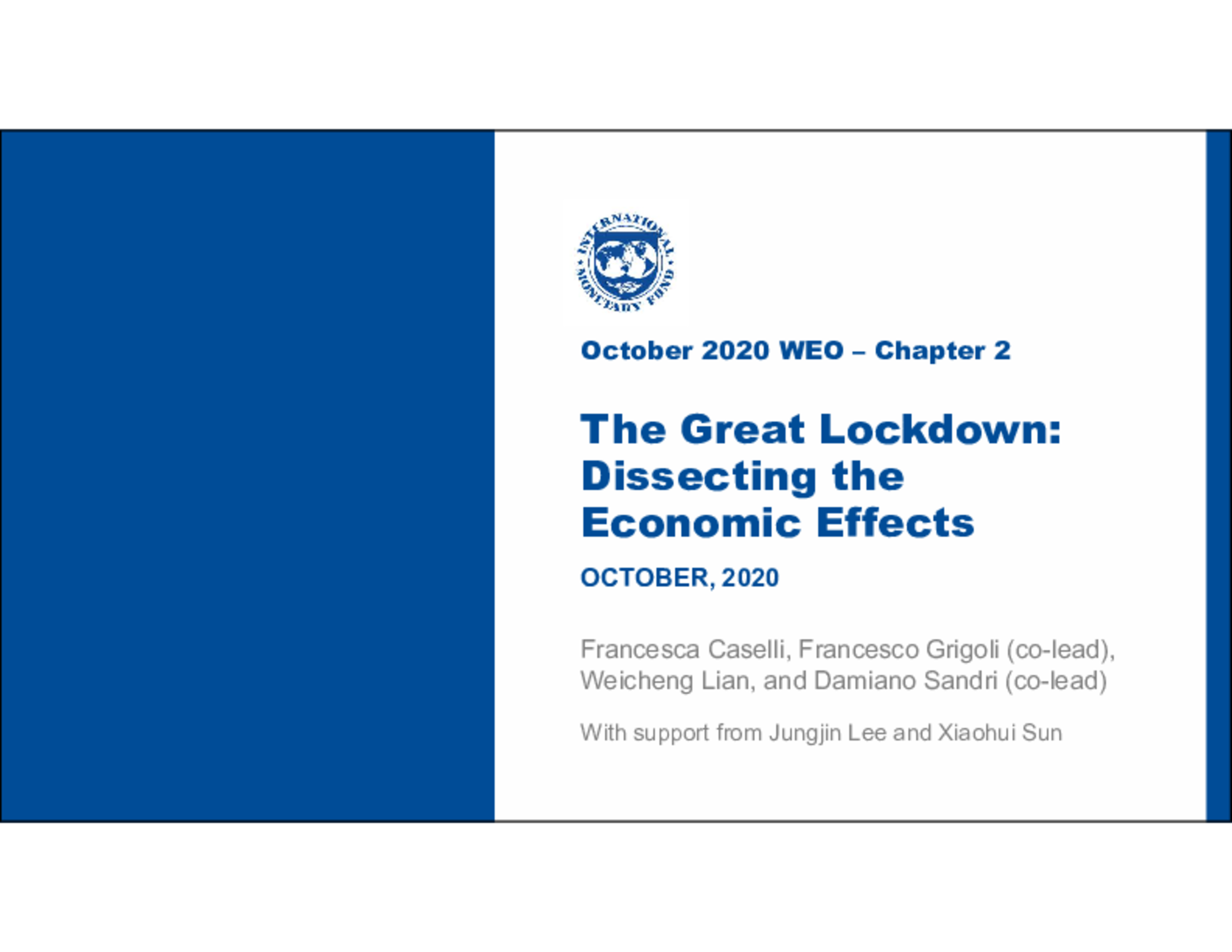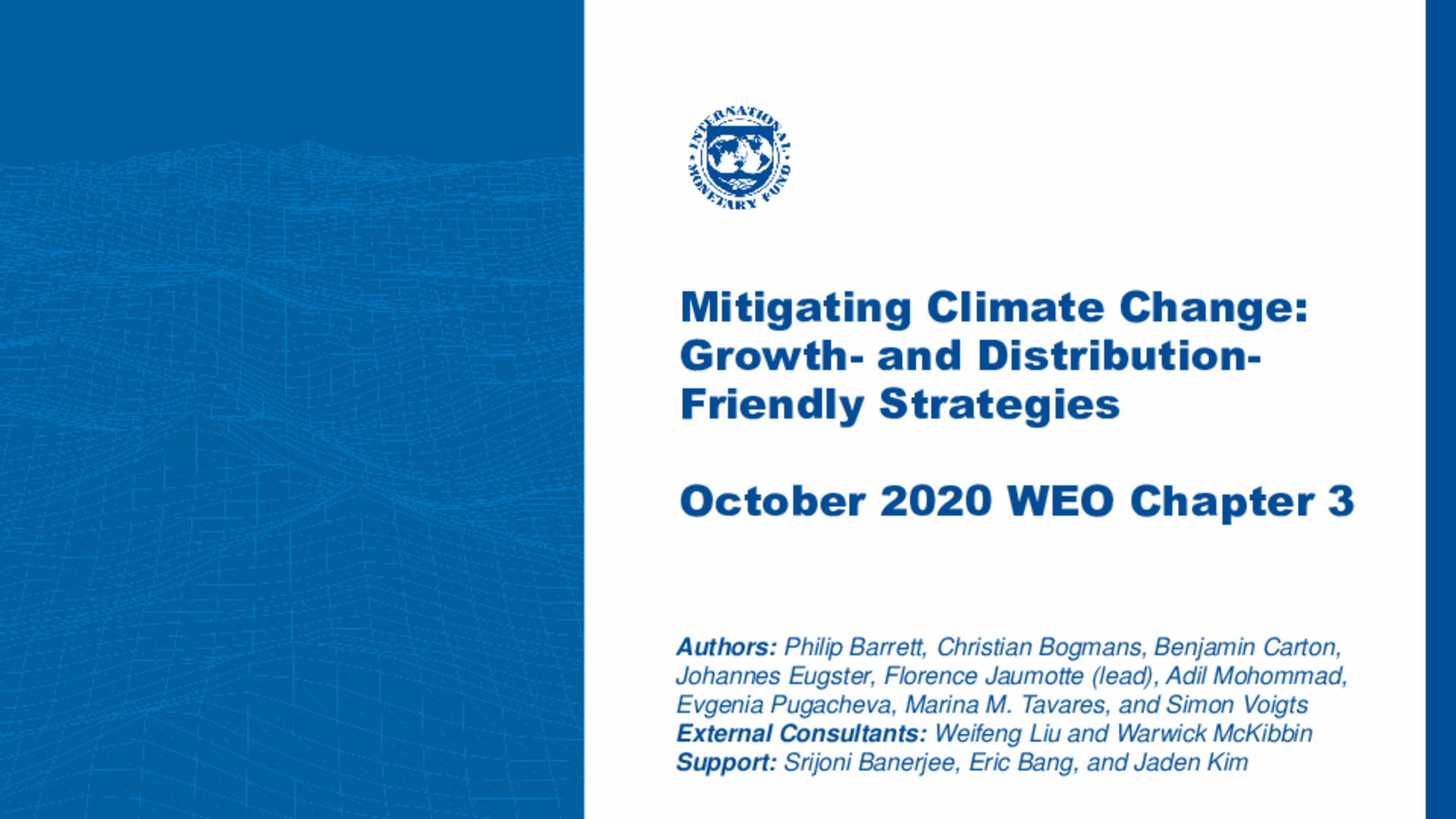Looking Back, Looking Forward: Understanding Lockdowns, Shaping a Green Recovery
When the October 2020 IMF World Economic Outlook was published, the world economy was at a turning point: the COVID-19 pandemic had been raging for over seven months, but vaccine development had progressed swiftly, with several candidates in the last phase of clinical trials. There was therefore enough data for a detailed analysis of the effects of COVID-fighting policies as recommendations were sought on how to shape the expected vaccine-driven recovery.
On December 10, 2020, Francesco Grigoli and Adil Mohommad of the IMF Research Department joined JVI Director Hervé Joly in a webinar to present the two analytical chapters of the new WEO.
The Economic Effects of Lockdowns
In response to the pandemic, most countries imposed lockdowns. The study presented by Francesco Grigoli concluded that lockdowns are effective tools in containing the spread of the virus. Yet, the bear inevitable economic costs. In particular, the findings reveal that lockdowns account for about half of the economic contraction, and that voluntary social distancing accounted for the other half (see Figure 1, where economic activity is proxied by a measure of mobility, which is available at high frequency). This result could explain the slow pace of the economic rebound after lockdowns were lifted.
The study also found that lockdown measures hit women and the young disproportionately. This is consistent with women’s greater involvement in childcare and the fact that they tend to be employed in the sectors most affected by the pandemic, such as contact-intensive ones. A consequence of these findings is a possible widening of gender and intergenerational inequality due to the pandemic.
In addition, infections were found to plunge where lockdowns were stringent and timely. Specifically, the reduction in the number of cases was largest when governments introduced measures quickly, before many people had been infected. Tighter lockdowns, while being much more successful in curbing infections than mild lockdowns, also seem to have lower marginal economic costs. Thus, by reducing voluntary social distancing, they could pave the way for a quicker economic recovery.
The results on the negative effect of voluntary social distancing on economic activity also suggest that governments should not expect a speedy recovery after lockdowns are lifted if health risks persist. Rather, they should continue supporting their economies throughout the pandemic.
Strategies to Mitigate Climate Change
With average temperatures on the rise globally, governments must act quickly to avoid potentially catastrophic impacts from climate change. The analysis discussed by Adil Mohommad indicated that the right mix of policies can achieve the target of net zero CO2 emissions in 2050—consistent with the goals of the 2015 Paris Agreement—without seriously damaging economic activity. The right policy mix could consist of a green fiscal stimulus in the near term, a pre-announced and steadily rising carbon tax, and compensatory transfers to those hit hardest by the transition.
The carbon tax in effect raises energy prices and thus boosts energy efficiency and incentivizes shifting resources to low-carbon energy sources and activities; it contributes most to the reduction of CO2 emissions. The green fiscal stimulus, by subsidizing the cost of green energy, also accelerates the shift to carbon-neutral energy sources.
Such a policy package would leave economic output smaller by about 1 percent in 2050 relative to the baseline scenario where no action on climate change is taken (see Figure 2). The green fiscal stimulus boosts GDP in the initial years via higher investment spending and higher productivity of low-carbon sectors. After about 15 years, the drag from the progressively rising carbon tax lowers output below the baseline. Over the longer horizon beyond 2050, avoiding climate change-induced damage substantially increases GDP above the baseline.
Finally, it has to be recognized that the costs and benefits of such a policy package are not the same for all regions and households. Although the transition costs will be higher for oil-producing and fast¬-growing countries, these countries also stand to gain significantly from the co-benefits of climate mitigation—these are reductions in mortality risks and improved health from less air pollution (as a result of lower use of coal and natural gas) and reduced road congestion, traffic accident risk, and road damage. Further, given that many such countries are located in hotter regions of the world, they would also gain substantially from avoiding severe climate-change related economic damage. Transition policies will disproportionately hurt poorer households, whose consumption and employment tend to be more carbon-intensive than those of richer households. By distributing a fraction of the carbon-tax revenues to poorer households and supporting job transitions to low-carbon sectors, governments could cushion the blow and encourage acceptance of the transition.
Laurent Millischer, Economist, JVI













